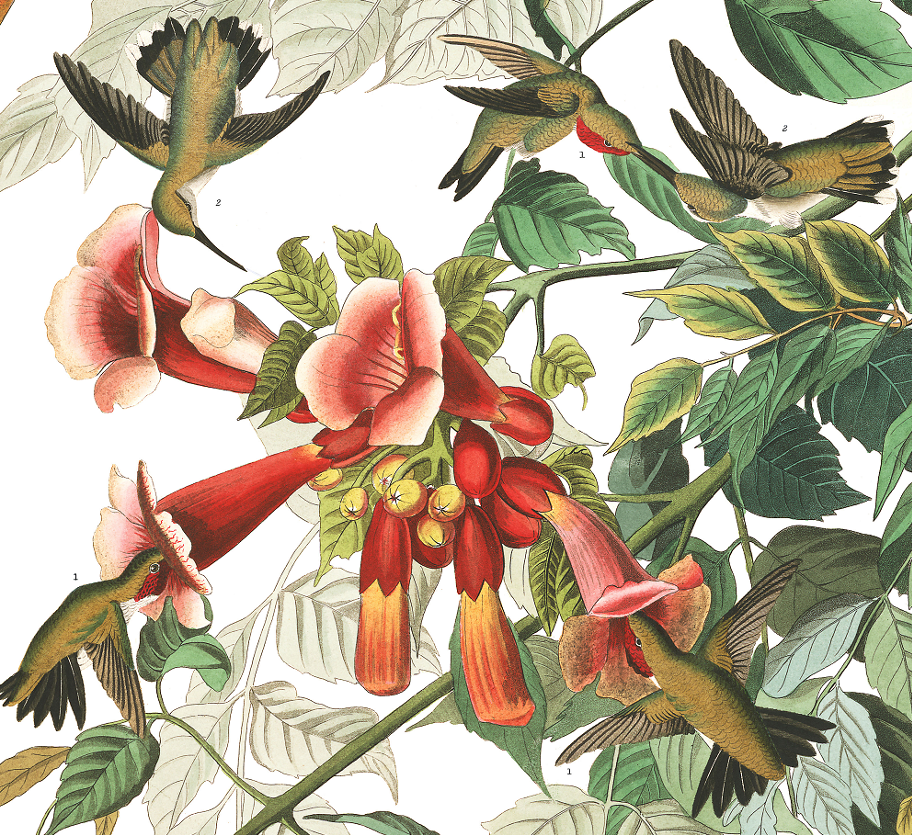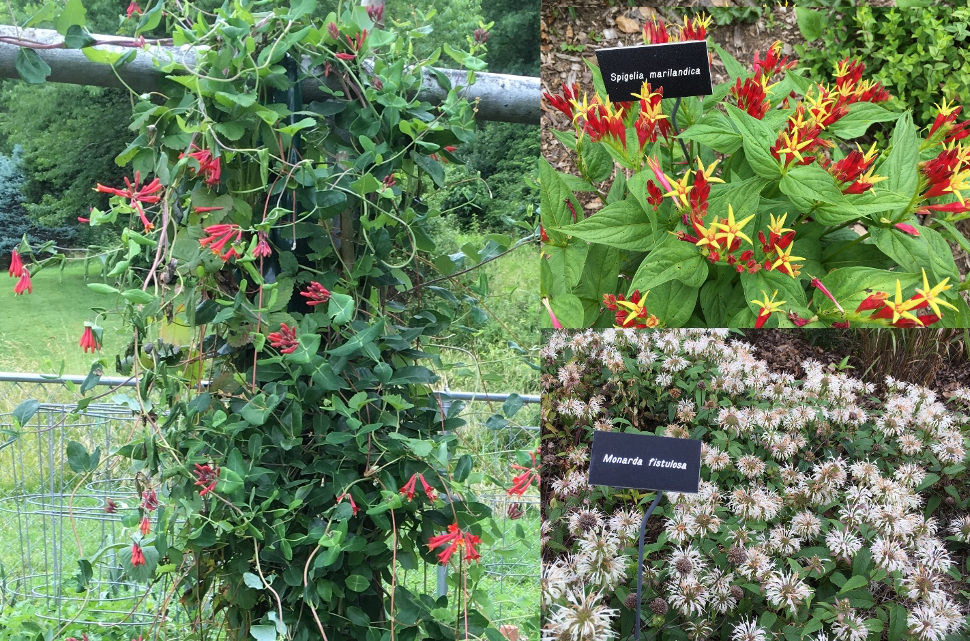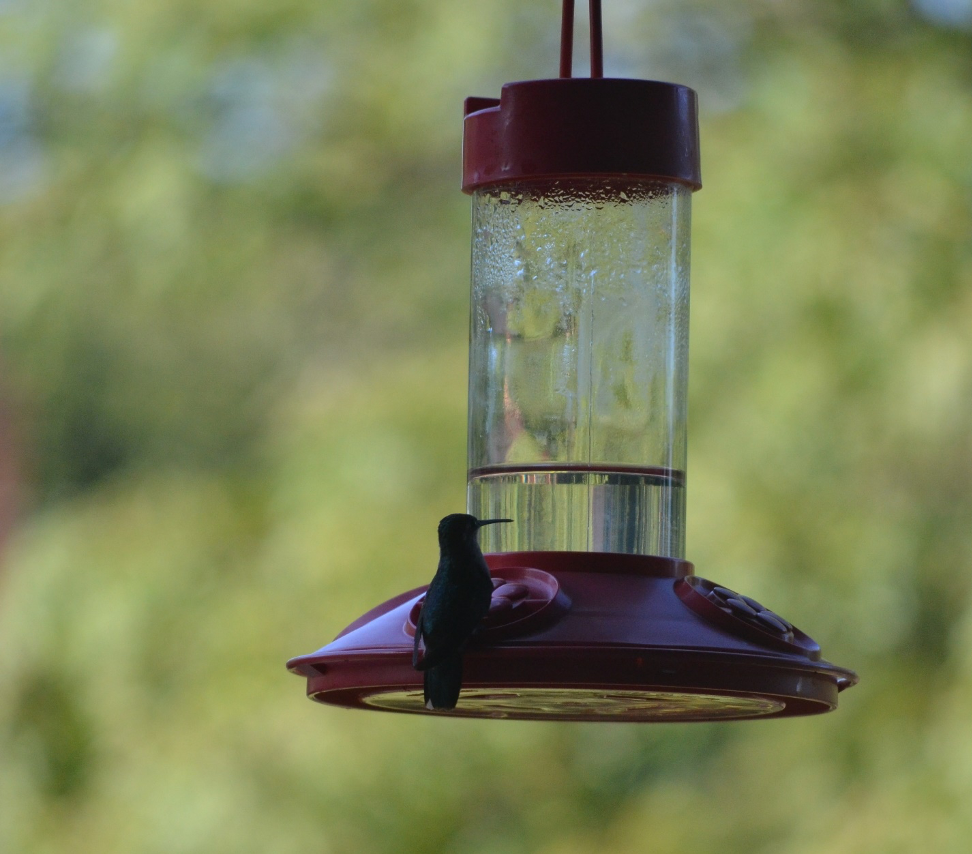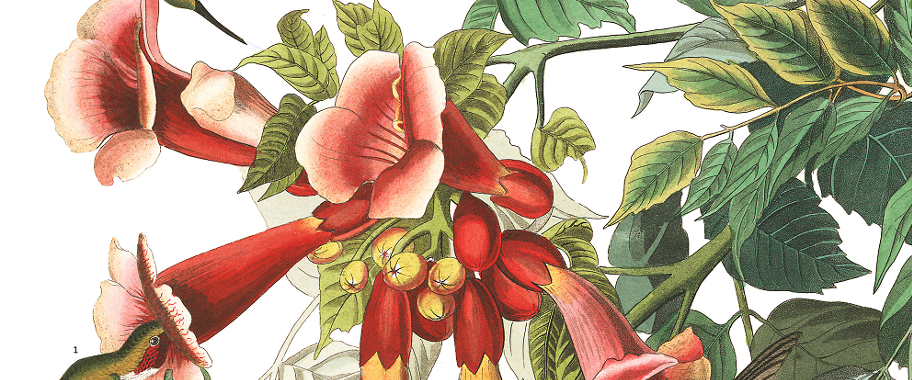
CMC Blog
The hummers are coming!
By: Emily Imhoff, Zoology Collections Manager
“No sooner has the returning sun again introduced the vernal season, and caused millions of plants to expand their leaves and blossoms to his genial beams, than the little Humming-bird is seen advancing on fairy wings, carefully visiting every opening flower-cup…”
So wrote John James Audubon, noted ornithologist and artist (and first official employee of our predecessor institution, the Western Museum), on the spring migration of Ruby-throated Hummingbirds (Archilochus colubris). These amazing, tiny birds will soon be returning to our area from their wintering grounds in Central America. We expect them to arrive in the Cincinnati region around mid-April.

Detail of John James Audubon’s painting depicting male and female Ruby-throated Hummingbirds feeding on a Trumpet Vine.
Would you like to see hummingbirds up close? You can try feeding them in your yard, patio or balcony. Hummingbirds eat nectar from flowers, small insects, pollen and sap. They eat frequently throughout the day, and can eat up to twelve times their own body weight in one day!
The ideal way to feed hummingbirds is to grow plants they like to feed from. Below is a short list of some of our American plant species that hummingbirds prefer. There are many more species to choose from; you can have a look online to find more recommendations!
Red Cardinal Flower Lobelia cardinalis
Bee Balm Monarda bradburiana
Butterfly Milkweed Asclepias tuberosa
Indian Pink Spigelia marylandica*
Wild Columbine Aquilegia Canadensis
Wild Bergamot Mondarda fistulosa*
Purple Coneflower Echinacea purpurea
Coral or Trumpet Honeysuckle Lonicera sempervirens*
Witch Hazel Hamamelis virginiana
Wild Plum Prunus americana
Ohio Buckeye Aesculus glabra

Left: Coral or Trumpet Honeysuckle (not to be confused with invasive honeysuckle species!)
Right top: Indian Pink
Right bottom: Wild Bergamot
Another way to feed hummingbirds is to use a feeder, typically a sugar-water feeder. You can make or buy a feeder, but either way, make sure it is easy to clean! The best food to fill it with is a simple mixture of ¼ cup cane sugar dissolved into 1 cup of water. Using red coloring is not necessary, and may be unhealthy for the birds. Clean the feeder and refill with fresh “nectar” every couple of days. If hummingbirds aren’t finding your feeder, you can put up red ribbons nearby until they find it.

Ruby-throated Hummingbird visiting a feeder in Cincinnati.
You can also use a feeder that attracts fruit flies, which the hummingbirds then eat or feed to their young. Hummingbirds need to feed insects to their babies so they get enough protein to grow, so consider this type of feeder if you know you have a nest nearby. But also consider how close your neighbors live – if they are very close they may not appreciate your efforts at attracting flies!
Once you have hummingbirds coming to visit your plants or feeders, you will be amazed at how close they will fly to you if you sit outside motionless (especially if you wear a shirt with bright colors)!
For more info on how to attract these tiny gems of the bird world, check out this website: https://www.allaboutbirds.org/news/feeding-hummingbirds/
Museum Admission
Includes Cincinnati History Museum, Museum of Natural History & Science and The Children’s Museum.
| Adult (13+): | |
| Senior (60+): | |
| Child (3-12): | |
| Member Adult: | FREE |
| Member Child: | FREE |
Members receive discounts!
Become a Member today to save on programs, exhibits and films throughout CMC.
Museum Hours
Open Thursday – Monday
10 a.m. to 5 p.m.
Closed Tuesday and Wednesday
Closed Thanksgiving Day and Christmas Day
Member’s-only early entry: Saturdays at 9 a.m.
Customer Service Hours:
Monday – Sunday, 9 a.m. to 5 p.m.



